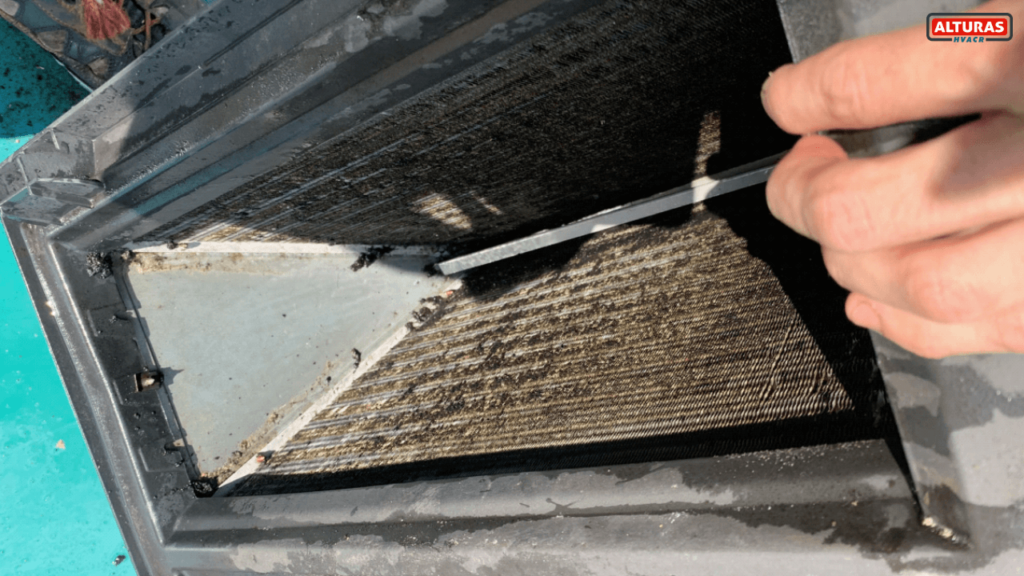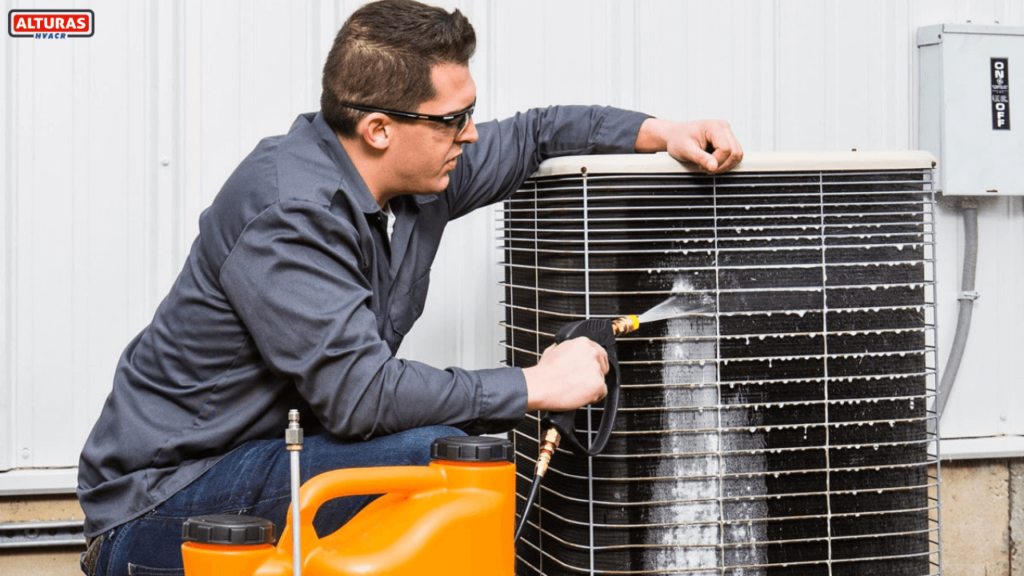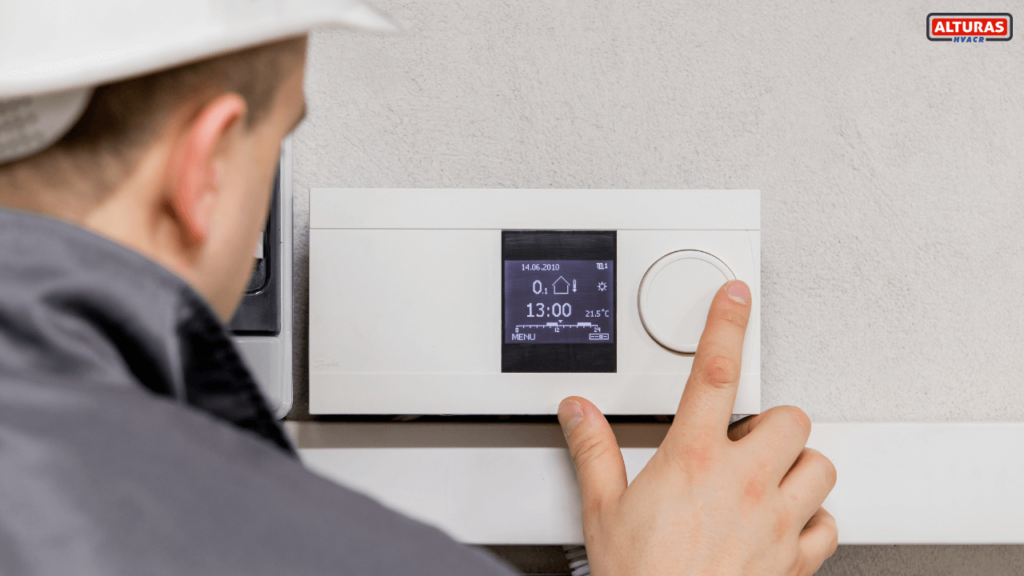An HVAC system is an essential part of any residential, commercial, or industrial area or building. It keeps the indoor temperature at a comfortable level, improves air quality, and circulates fresh air. However, like any other system, an HVAC system requires regular maintenance to function efficiently. One of the critical components of an HVAC system is the HVAC coil which facilitates the exchange of thermal energy. It needs to be cleaned periodically to maintain optimal performance. In this article, we will discuss how to clean your HVAC coil.
What is an HVAC coil?

An HVAC coil is a heat exchanger that facilitates heat transfer between the air and the refrigerant. There are two types of coils in an HVAC system i.e: the evaporator coil and the condenser coil. The evaporator coil is located inside the building. It absorbs heat from the indoor air. Whereas the condenser coil is located outside the building and releases heat to the outdoor air.
Why do HVAC coils need to be cleaned?
With continuous usage, HVAC coils accumulate dirt, dust, and other debris, which reduces their efficiency and makes them less effective at transferring heat. Over time, this buildup reduces the system’s ability to transfer heat into and out of the home, thus reducing your system’s ability to provide summer cooling. In more extreme cases, dirty coils can also hinder or block the airflow that is important for the entire process.
A dirty HVAC coil can increase energy consumption, decrease the system’s cooling capacity, and shorten the lifespan of the HVAC system. As dust, pathogens, and debris can circulate throughout the building, it can also lead to poor indoor air quality. Moreover, dirty coils can lead to
- Increased operating temperatures.
- Higher humidity and reduced comfort.
- Decreased cooling efficiency.
- Increased cooling costs.
- Increased system wear.
- System repairs or replacement.
Therefore, properly cleaning and maintaining HVAC coils are essential to maximizing your system’s efficiency and lifespan.
How to clean the HVAC coil?

Since the condenser coils are located outdoors in the compressor unit, they can be exposed to rain, mist, dirt, leaves, or even trash. Proper placement of the unit can help protect it from excessive debris. Moreover, establishing a regular maintenance and cleaning schedule for HVAC coils is crucial to keeping your system running efficiently.
Cleaning an HVAC coil is a simple process, but it requires some preparation and equipment. Here is a step-by-step guide to clean your HVAC coil:
Turn off the power
Before you start cleaning the HVAC coil, make sure to turn off the power to the unit. This is to ensure your safety and to prevent any accidents.
Remove the access panel
Next, remove the access panel that covers the HVAC coil. You may require a screwdriver or a socket wrench, depending on the unit.
Inspect the coil
Once you have removed the access panel, inspect the coil for any signs of damage, such as bent or leaks. If you notice any damage, you may need to replace the coil or contact a professional HVAC company for repairs.
Vacuum the coil
Using a soft-bristled brush attachment, vacuum the coil to remove loose debris and dust. Make sure to vacuum both sides of the coil, as well as the surrounding area.
Apply cleaner
After vacuuming, apply a coil cleaner to the surface of the coil. Coil cleaners are available in spray or foam form. They are designed to dissolve and remove dirt and debris. Follow the instructions on the cleaner label. Moreover, make sure to wear gloves and safety glasses when handling the cleaner.
Let the cleaner sit
Allow the cleaner to sit on the coil for the recommended time, usually 5-10 minutes. This will give the cleaner time to dissolve any dirt or debris on the coil.
Rinse the coil
After the cleaner has sat for the recommended time, rinse the coil with water. Use a garden hose or a pressure washer, but be careful not to apply too much pressure, as this can damage the fins. Rinse both sides of the coil, as well as the surrounding area.
Let the coil dry
Once you have rinsed the coil, let it dry completely before replacing the access panel and turning the power back on. This may take several hours, depending on the humidity and temperature.
Maintenance and cleaning of condenser coils also include clearing landscaping from around the HVAC unit, brushing away surface dirt on the unit, wiping or hosing down coils, and inspecting the coils for any damage. Regular maintenance can also help you stay ahead of issues like refrigerant leaks or freezing of the coils. Cleaning filters and other system components can prevent debris or obstructions that decrease system efficiency.
Weather events, construction, or lawn maintenance are all factors that can create the need for more frequent cleaning of HVAC coils. This will ensure they operate at maximum efficiency. Moreover, regular maintenance and cleaning are necessary to make sure the unit is not overworked.
Contact Alturas HVAC Contractors for HVAC Coil Maintenance

Many homeowners would opt to perform air conditioner coil cleaning on their own using the previously described steps. However, regular HVAC coil cleaning services are much less expensive than repair bills that could result from ignoring this maintenance item. However, the better solution is to hire a trusted HVAC professional. It is always recommended to call an HVAC professional at your place for your HVAC coil maintenance.
Alturas HVAC professionals in Los Angeles are well-known and trustworthy commercial HVAC contractors. Our HVAC company is experienced in providing HVAC equipment installation, repair, and maintenance services. We have professional and trained HVAC technicians who are adept at diagnosing the issue and then rectifying the problem. Our team ensures that your equipment remains long-lasting and doesn’t malfunction every now and then.

